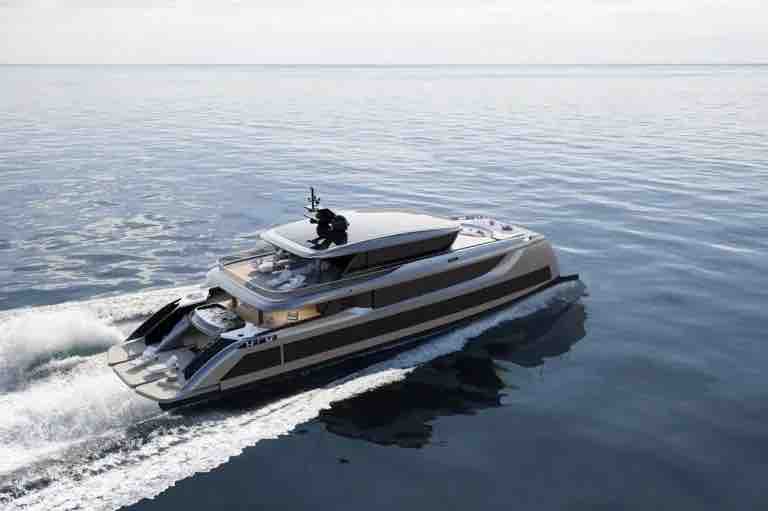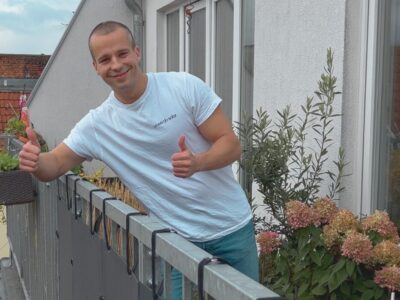Hydrogen energy has been tested on a few superyachts, but the question remains whether it can be brought to a scale everyone can use. Other alternatives for decarbonized maritime travel have been explored, and many of them involve less carbon-heavy fuel like green methanol, solar-integrated systems, or hydrofoil combined with electric propulsion. However, Rinaldo Brutoco of World Business Academy believes hydrogen is the best and most practical fuel alternative for yachts.
Brutoco, who joined The Business Download (TBD) previously to discuss his work on decarbonizing California’s rail system, is the CEO and founder of H2 Clipper, a hydrogen delivery company working on many transportation decarbonization projects, including maritime travel.
H2 Clipper is working on a long-haul hydrogen and freight transport called the Clipper, an airship that can refuel and deliver hydrogen from affordable sources.
He joined TBD via video chat to discuss a hydrogen-powered yacht his company is partnering with building and his thoughts on decarbonizing maritime travel.

Photo Courtesy Energy Observer
“Our technology makes hydrogen at sea. In fact, we’ve coined the phrase fuel-free yachts. Fuel-free yachts don’t require refueling from an external source,” Brutoco explained. Brutoco mentioned two European emission-free yachts — the French Energy Observer Odyssey yacht trip and the English Drift project — two hydrogen-powered, self-sufficient catamaran yachts that can create hydrogen at sea through a combination of water electrolysis, hard sail wind turbines, and solar.
“We did a search on their patents, and what they’re trying to do is to create enough hydrogen,” Brutoco said. “Their ship itself doesn’t run on hydrogen; they can sell it to individual vessels that want hydrogen in the open sea. It’s kind of like the Blue Rhino model for propane.”
Brutoco believes these two yachts are innovative but aren’t the most economical. H2 Clipper’s yacht offers a different approach. The company is working with acclaimed Australian yacht designer Sam Sorgiovanni and is looking for a production to build a prototype vessel.
It will be 100 feet long and “doesn’t need to be refueled from any source ever. It will make 100% of its own energy from ocean water.”

Photo Courtesy Sorgiovanni Designs
Brutoco has a lot of experience with hydrogen-powered yachts. He is a former owner of a 62-foot-long catamaran built by French shipbuilder Lagoon.
“I experimented with virtually all the technology I wanted to use in the boat we’re going to build,” he said. “I wanted to see if I could make it so that I wouldn’t have to turn my diesel engines on for any purposes but entering and leaving the harbor. And I succeeded.” He piloted the yacht for six years before selling it recently.
Brutoco’s experimentation, combined with many shipbuilders and yacht manufacturers switching to green propulsion, encapsulates the concerted effort to reduce global maritime emissions. The International Energy Agency says shipping accounts for 2% of global carbon dioxide (CO2) emissions. Luxury yachts have a smaller impact but are still considerably harmful to the atmosphere.
H2 Clipper’s yacht will have hydrogen fuel cells, no diesel fuel whatsoever — not even for emergency or auxiliary power.
The hydrogen will be created from seawater en route, not at the dock, though it is possible to use the dock seawater for its fuel. Brutoco didn’t wish to reveal all the details about the project yet, but he gave a sense there is serious progress and it will be in high demand.
Brutoco strongly supports hydrogen propulsion, finding it more practical and greener than methanol fuel. Though several major shipping companies are utilizing green methanol for transoceanic logistics, it doesn’t address the other greenhouse gases like methane, a common emission for fossil fuel-burning ships.
“I think it’s a wrong turn. The industry knows they have to shift,” he said. “They are trying to preserve their fossil fuel technological history. Given how much crap the shipping industry puts in the air, from a climate change point of view, I think they realize government action is not that far away.” He also feels this way about ammonia fuel use, which Finnish shipbuilder Wärtsilä and Norwegian shipping company Eidesvik Offshore are converting a platform supply vessel to run on.
“Ammonia is highly toxic, but hydrogen is not. Hydrogen is pure, but ammonia is not,” Brutoco said. “You get more bang for your buck. The only problem is we don’t know what to do with [ammonia]. It’s so toxic that I think only three of four ships will even carry it. You have an ammonia spill; you got a problem.” Researchers have pointed to issues surrounding ammonia – a recent MIT study delved into the health hazards.
H2 Clipper is a technology-enabling company looking to develop a suite of patents to create licensing revenue as a business model. The firm hopes to enable transportation to run smoothly on this element.
“I believe the future of marine travel is ships without any fossil fuel. I believe we can [get] there faster than most people think because they don’t understand hydrogen,” Brutoco stressed.
“Hard sails will survive on freighters. Four prominent manufacturers will save a ship around 8% of the fuel bill with hard sails. That’s why they’re selling like hotcakes.” Hard sails are a form of wind power that more shipping lines are integrating into their vessels.

Photo Courtesy Tobias Tullius
There will be more pioneers of hydrogen propulsion yachts. One way to get these vessels into mass production is to adopt the robotic manufacturing Tesla uses. H2 Clipper uses repetitive motion robotics in its hydrogen delivery system manufacturing. It can be applied to yachts as well.
Rinaldo Brutoco says the company “possesses the most advanced robotic patents for large objects manufacturing in the world,” He continues to say, “We patented a thing called swarm robotics, which is the way people will be making this stuff in the future.”
“If you could make a 767 airplane as an example because our patent covers this, and instead of having a hangar of a building that’s two miles long, increasing production costs on the assembly line,” he continued. “If I could take and build that same, in my case, Clipper, 1,000 feet long in 1,500 feet of space instead of the mile-long tunnel, I have an advantage.”
Maritime travel is getting greener every year, but getting it to scale will continue to be a process. However, Brutoco is in it for the long term. Keep your eyes peeled for H2 Clipper’s yacht.





